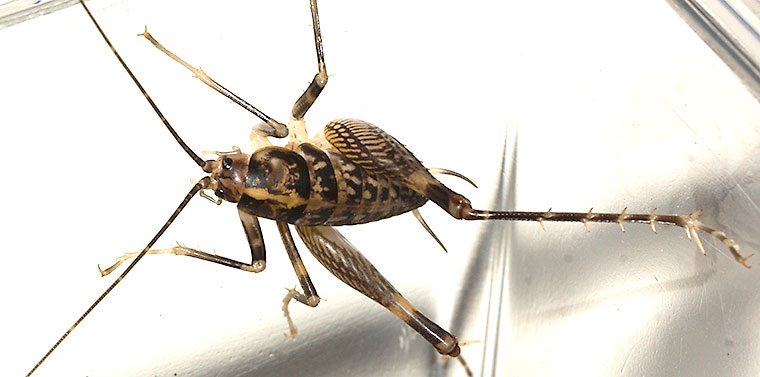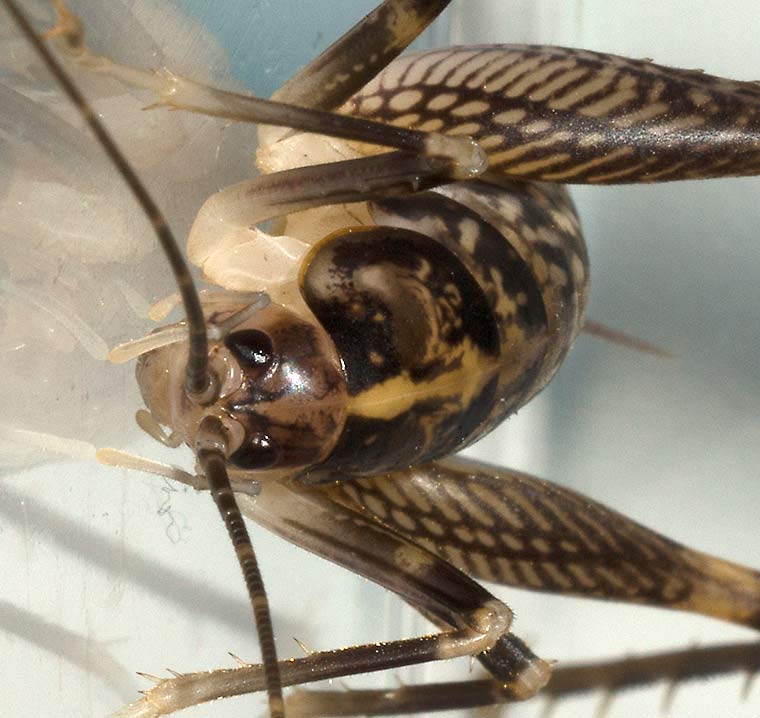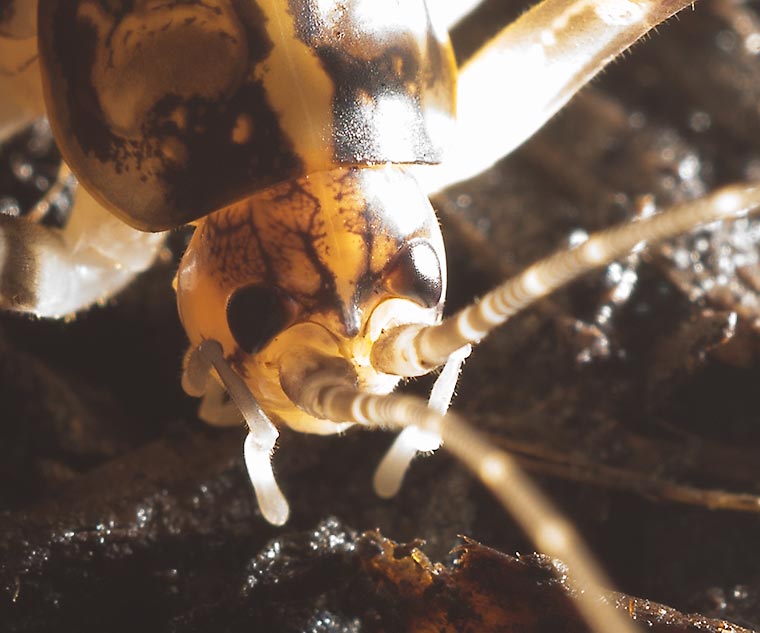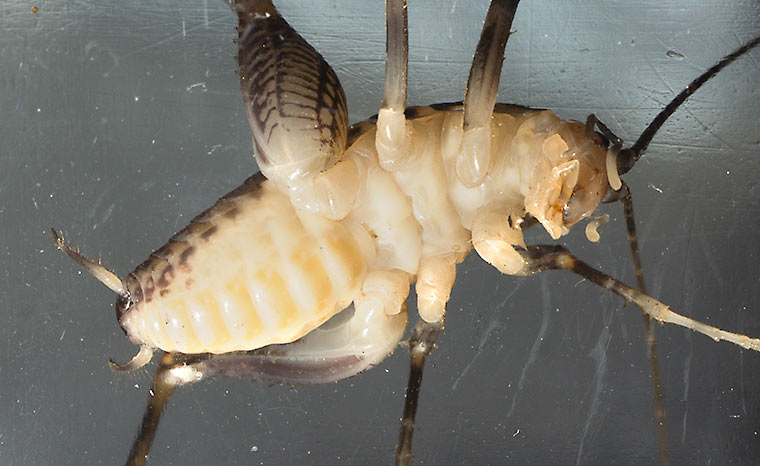Some of the grandchildren were here recently. They were outside after dark when Katie spotted this interesting insect crawling around on the trunk of a small dead tree. She called me over, and I was able to grab it and transfer it to a terrarium inside the house. I watched it for a few days, took these pictures, and finally turned it loose.
It is a type of camel cricket, named because of its humpbacked appearance. This species is large for a cricket, about 1.5 inches with long legs and antennae. Camel crickets are also sometimes referred to as “sprickets”, because with their long legs, they resemble some spiders. Camel cricket’s long antennae are an adaption for nocturnal living. They are sometimes found in caves, so they are also called cave crickets.
The first two photographs show some of the amazing color patterns on this creature’s body. If it only goes around at night, why is it so intricately patterned? Actually, I don’t suppose they only go around at night; maybe their color pattern serves as camouflage during rare daytime forays…or it could serve as camouflage when they are attempting to hide during the daylight hours, It must be remembered also that insect vision is different from ours. Some, at least, are able to see into ultraviolet regions of the spectrum that are invisible to us. Who knows what this creature looks like to other insects, including insects which are predators or potential mates?
This closeup of the head shows the basal parts of the antennae, the eyes, and two palps (mouth parts). You also get some appreciation how the exoskeleton of insects gives them an “armored” and alien look.
The underside of this animal is very light-colored with no strong color pattern. This one is a male. If it were female there would be a long spike-like structure extending from its posterior. The spike is called an ovipositor and is used to deposit eggs in the earth or in cracks and crevices of trees or stones. The two shorter protrusions from the rear of the animal are sensors used to detect humidity or air movement.
Camel crickets have no wings and cannot fly. Since crickets saw their legs back and forth over their wings to make their typical sounds, camel crickets are mute. What they can do is jump very well. Their response to being startled or threatened is to make a long jump, sometimes as long as six feet in length. Although they might inadvertently jump toward a person, they pose no threat. They will, however, eat just about anything, including in one reported case, clothes on a line. They can thus be a pest in certain cases. They are attracted to moist places, so a damp basement can make a good habitat.
Discover more from A Naturalist's Journal
Subscribe to get the latest posts to your email.




